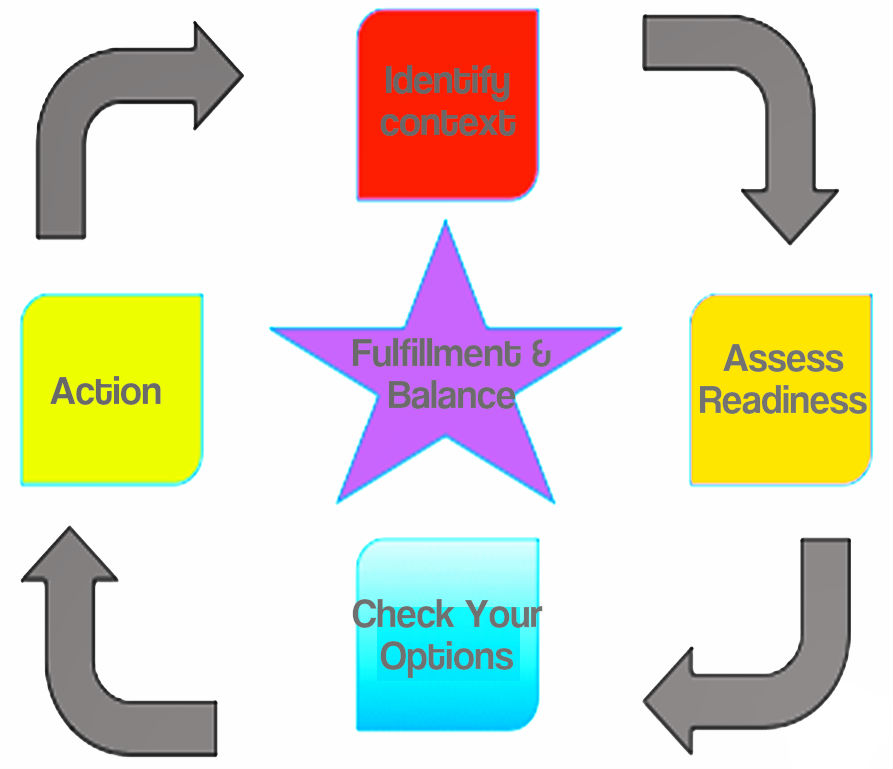A Coaching Model Created by Silvia Macedo
(Executive Coaching, UNITED STATES)
The Coaching @ Work Model was inspired by the GROW Coaching Model and the Situational Leadership Model from Hersey and Blanchard and it has four different stages:
- Identify the context
- Assess readiness
- Check your options
- Action
 The model above represents four fundamental stages that can help and support the manager/team leader through coaching sessions and one-to-one’s with the direct report. It is a simple model to use which focus on helping the individual to reach fulfillment (finding and experience a life/job full of purpose) and balance (in accordance with the individual’s context).
The model above represents four fundamental stages that can help and support the manager/team leader through coaching sessions and one-to-one’s with the direct report. It is a simple model to use which focus on helping the individual to reach fulfillment (finding and experience a life/job full of purpose) and balance (in accordance with the individual’s context).
1. Identify the context:
spend as much time as you need on this first stage. At this point ask as many questions as possible (probe) so you can clearly understand the context. Sometimes the coachee is not very clear about the context and this is a great opportunity to help them focusing. It is also relevant to get the managers perspective so we can get more clarity on what we are trying to achieve.
When identifying the context we should have two things into account:
The context needs to be aligned with the company goals/commitments so have a better understanding of the path ahead of us.
2. Assess readiness:
as soon as we have a clear picture in our heads regarding the context we can then start probing to understand more about the current situation and where the needs/gaps are. We need to focus on what needs to be achieved and what is stopping us from getting there. Challenging questions are a must at this stage. Allow some time for the coachee to reflect upon those questions.
Ask the manager questions regarding the person’s ability to do the job (focus on the knowledge, experience and skills) and the person’s willingness towards their job (focus on motivation & commitment and confidence).
3. Check your options:
after understanding the context and having a clear picture regarding the current reality it is time to move on with the options that we might have to accomplish our main goal. We should get as many options as possible so the manager can then decide on the ones we would like to focus on.
4. Action:
these are the activities/tasks the manager comes up with and agrees to move forward. The manager is accountable for these actions and reviews them on a regular basis. These actions should always follow the SMART format (specific, measurable, achievable, realistic and time-bounded).
This model is very easy and straight forward. It allows managers to think more in depth about their direct reports and different ways to help and support their journey at work by encouraging them to think more about the person as well as on the task and on their performance.